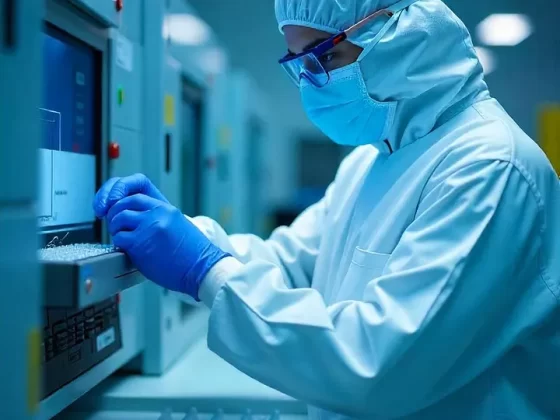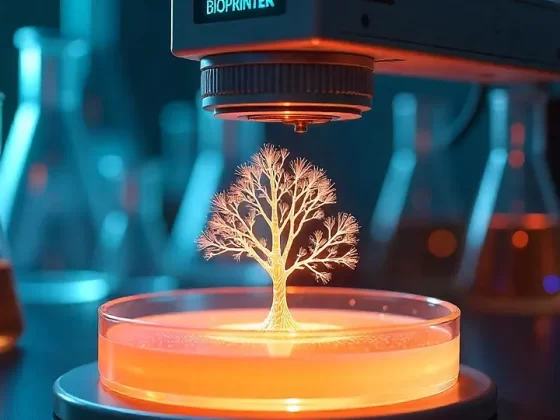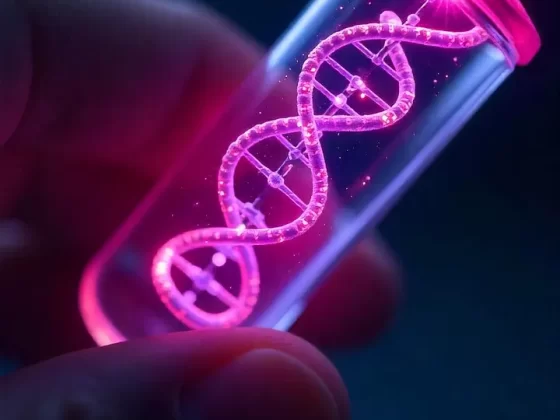Nanomedicine: Revolutionizing Treatment at the Molecular Level
By Akshata Shailendra Singh
Imagine a world where medicine is delivered directly to diseased cells, minimizing side effects and maximizing effectiveness. That’s the power of nanomedicine.
– Dr. Chad Mirkin, Nanotechnology Researcher
Nanomedicine stands at the forefront of medical innovation, leveraging the unique properties of nanoscale materials to revolutionize diagnostics, therapeutics, and disease prevention. By manipulating structures at the molecular and atomic levels, typically between 1 and 100 nanometers, nanomedicine offers unprecedented precision in targeting disease mechanisms, potentially transforming patient care. A primary application of nanomedicine is in drug delivery systems.
Traditional drug administration often faces challenges such as poor solubility, limited bioavailability, and non-specific distribution, which can lead to suboptimal therapeutic effects and adverse side effects. Nanocarriers, including liposomes, dendrimers, and polymeric nanoparticles, have been engineered to overcome these obstacles.
For instance, liposome-encapsulated drugs like Doxil have been approved for treating various cancers, offering improved drug stability and targeted delivery to tumor sites. This encapsulation not only enhances the therapeutic index but also reduces toxicity to healthy tissues. In the realm of diagnostics, nanomedicine has introduced advanced imaging techniques. Nanoparticle-based contrast agents have been developed to improve the sensitivity and specificity of imaging modalities such as magnetic resonance imaging (MRI) and ultrasound. Quantum dots, a type of nanoparticle, exhibit size-tunable light emission, allowing for high-contrast imaging of biological tissues. When conjugated with targeting ligands, these nanoparticles can bind to specific cellular markers, enabling the early detection of diseases like cancer at the molecular level.
The significance of nanomedicine is underscored by its rapid market growth. In 2022, the global nanomedicine market was valued at approximately $174.13 billion and is projected to expand at a compound annual growth rate (CAGR) of 11.57% from 2023 to 2030, potentially reaching $410.15 billion by the end of the decade. This growth is driven by the increasing prevalence of chronic diseases, advancements in nanotechnology, and the rising demand for personalized medicine. Looking ahead, the future of nanomedicine is poised for remarkable advancements. One promising area is the development of magnetic nanopharmaceuticals for targeted cancer therapy.

Researchers have designed magnetic nanodrugs capable of precisely attacking colon cancer cells. These nanopharmaceuticals combine specific antibodies with magnetic materials, allowing for targeted delivery and controlled release of anticancer agents. Preclinical studies have demonstrated enhanced efficacy and reduced side effects compared to conventional therapies. Another frontier is the application of nanomedicine in space exploration. Astronauts on long-duration missions, such as those to Mars, are exposed to high levels of cosmic radiation, increasing their risk of developing cancer and other health issues. A biotech startup, Nanotics, is developing nanoparticle injections designed to counteract these risks.
Their nanomedicine, known as NaNots, targets immune system signals exploited by tumors, offering a potential therapeutic strategy to maintain astronaut health during deep-space missions. Despite these promising developments, several challenges must be addressed to fully realize the potential of nanomedicine. Ensuring the safety and biocompatibility of nanomaterials is paramount, as their small size and unique properties may pose unforeseen biological interactions. Regulatory frameworks need to evolve to keep pace with the rapid innovation in this field, establishing standardized protocols for evaluating the efficacy and safety of nanomedicine products. Additionally, ethical considerations regarding the long-term effects of nanomaterials on human health and the environment must be carefully examined.
“Nanomedicine is not just the future — it’s the present. We are already using nanoparticles to target disease at an unprecedented level of precision.”
– Dr. Robert Langer, Biomedical Engineer
In conclusion, nanomedicine is set to play a transformative role in the future of healthcare. Its applications in targeted drug delivery, advanced diagnostics, and novel therapeutic strategies hold the promise of more effective and personalized treatments. As research progresses and overcomes current challenges, nanomedicine will likely become integral to medical practice, offering solutions that were once the realm of science fiction. The continued collaboration between scientists, clinicians, regulatory bodies, and industry stakeholders will be crucial in navigating the path toward the safe and effective integration of nanomedicine into standard healthcare protocols.









